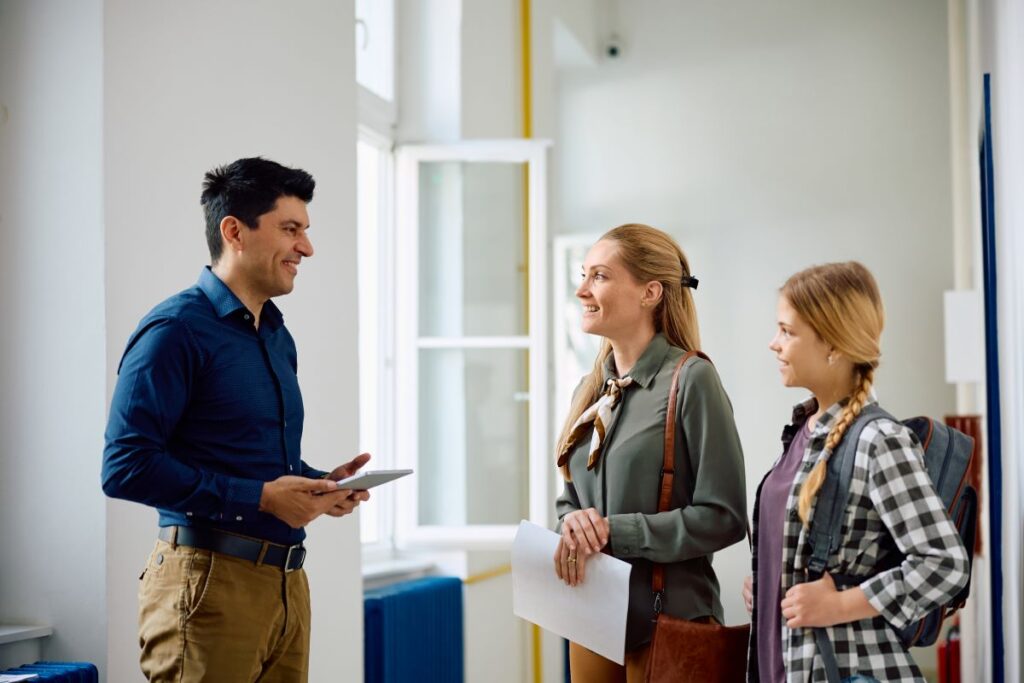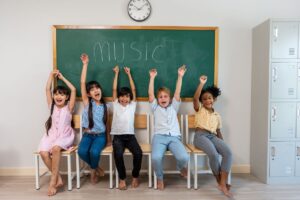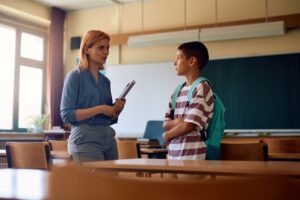The hum of the air conditioner, the faint scent of fresh paper and disinfectant, the carefully arranged desks—the classroom is ready. But are you?
The summer haze is fading, and with it, the quiet stillness of your empty classroom. Soon, the halls will be filled with the eager, and sometimes anxious, faces of students and their families. This is a moment we all prepare for, meticulously arranging bulletin boards, perfecting lesson plans, and organizing supplies.
However, one of the most critical events of the back-to-school season is not for our students, but for their most important advocates: their parents and guardians. Back to School Night is more than just a meet-and-greet; it’s the cornerstone of a successful family-school partnership, setting the tone for communication, collaboration, and mutual respect for the entire year.
As educators, we know that a strong partnership with families is crucial for student success. A well-executed Back to School Night can bridge the gap between home and school, transforming parents from passive observers into active partners in their child’s education. This isn’t a time for a performance, but for a professional, informative, and approachable presentation that empowers families and builds trust.
Phase 1: The Pre-Night Preparation
The success of your event hinges on what happens before the first family walks through your door. Think of this as laying the groundwork for a successful partnership.
The Invitation: Timely & Transparent
Don’t just rely on the school-wide notification. Send a personalized, direct email to the families in your class. Include:
-
- The exact date, time, and location of the event.
- A brief, bulleted agenda of what to expect.
- Clear instructions on where to park or enter the building.
- A warm, welcoming tone that expresses your excitement to meet them.
- Information about any virtual attendance options or a plan for families who cannot attend. This shows inclusivity and a commitment to reaching all families.
The Classroom Environment: Organized & Welcoming
Your physical space is a silent communicator. It should reflect the thoughtful, organized, and inviting learning environment you’ve created for their children.
-
- Desk & Classroom Setup: Ensure the classroom is clean and well-organized. Leave a “welcome” packet on each desk or chair.
- Student Work: Showcase a few examples of student work from the first few days of school (if possible), or display student name tags and “All About Me” posters. This personalizes the space and makes families feel connected.
- Essential Information: Have your classroom rules, a daily schedule, and other key information visibly posted. This demonstrates transparency and structure.
The Materials: Ready to Go
Create a packet of information for each family. This is a critical resource that families can refer to throughout the year. Your packet should include:
-
- A “Meet the Teacher” handout with your photo, a brief professional biography, and a personal detail or two to make you approachable (e.g., a favorite hobby or a pet).
- Your contact information and preferred communication methods (e.g., email, a classroom app, a call during your planning period).
- A copy of your classroom’s daily schedule.
- A clear outline of your classroom management system and behavior expectations.
- A detailed curriculum overview for the year, highlighting key topics and projects.
- Information about homework policies and grading procedures.
- A list of classroom needs or a link to an Amazon wish list (optional but often appreciated).
- Sign-up sheets for parent-teacher conferences or classroom volunteers.
Phase 2: The Main Event: Engagement, Not Just Information
This is your opportunity to connect and build relationships. While presenting information is important, the goal is to foster a two-way dialogue and make families feel heard and valued.
The Introduction: A Human Connection
Begin with a genuine, heartfelt welcome. Introduce yourself not just as a teacher, but as a dedicated professional committed to their child’s growth. Share your teaching philosophy and a brief story about what inspired you to become an educator. This helps families see you as a person, not just a position.
The Presentation: Focused & Efficient
Your presentation should be concise and highly organized. Use a slideshow to guide the discussion and keep families on track.
-
- Curriculum & Learning Goals: Provide an overview of the year’s curriculum. Explain the why behind your lessons—how they are designed to meet specific learning objectives and prepare students for the next grade level.
- Classroom Procedures & Expectations: Clearly communicate expectations for behavior, homework, and classroom routines. Explain how these procedures create a safe, consistent, and productive learning environment.
- Communication: The Cornerstone: Detail your communication plan. Let families know how often you will send updates, what type of updates to expect, and the best way to reach you with questions or concerns. Emphasize that you are a partner in their child’s education.
- Parent Involvement: Call to Action: Provide concrete ways for parents to get involved, from volunteering in the classroom to supporting learning at home. This transforms “parental involvement” from a vague concept into a clear and actionable path.
The Activities: Building Community
Beyond the presentation, include a few simple activities to foster connection and lighten the mood.
-
- “All About My Child” Notes: Provide a note card on each desk and ask families to write a quick note to you about their child—a fun fact, a favorite subject, or something they are looking forward to this year. This provides you with valuable, personalized insights.
- Scavenger Hunt: Create a simple scavenger hunt for families to explore the classroom, finding different learning centers, the daily schedule, or student work. This encourages them to engage with the physical space.
- Q&A Session: Dedicate time for questions. While it’s best to save individual questions about a specific child for a private conference, you can use this time to address general questions about the classroom or curriculum.
Phase 3: The Post-Night Follow-Up
The end of the night is just the beginning. The steps you take afterward solidify the trust you’ve started to build.
- The Thank You Note: Send a follow-up email to all families (those who attended and those who didn’t). Thank them for their time and reiterate your enthusiasm for the year ahead.
- Share Resources: For families who couldn’t attend, include the presentation slides or a summary of the key information in your follow-up email. This ensures that everyone has access to the same critical details.
- Review & Reflect: Take a moment to reflect on what went well and what could be improved for next year. What questions came up frequently? What resources seemed most helpful? Use this feedback to refine your process.
Back to School Night is your first, best chance to create a classroom community built on a foundation of open communication and shared goals. By following this comprehensive checklist, you can move past the typical meet-and-greet and establish the kind of meaningful, collaborative relationships that lead to a successful and rewarding school year for everyone.
You’ve got important career goals — we have the graduate program to get you there. Check out our available graduate degree programs to advance your career today!




